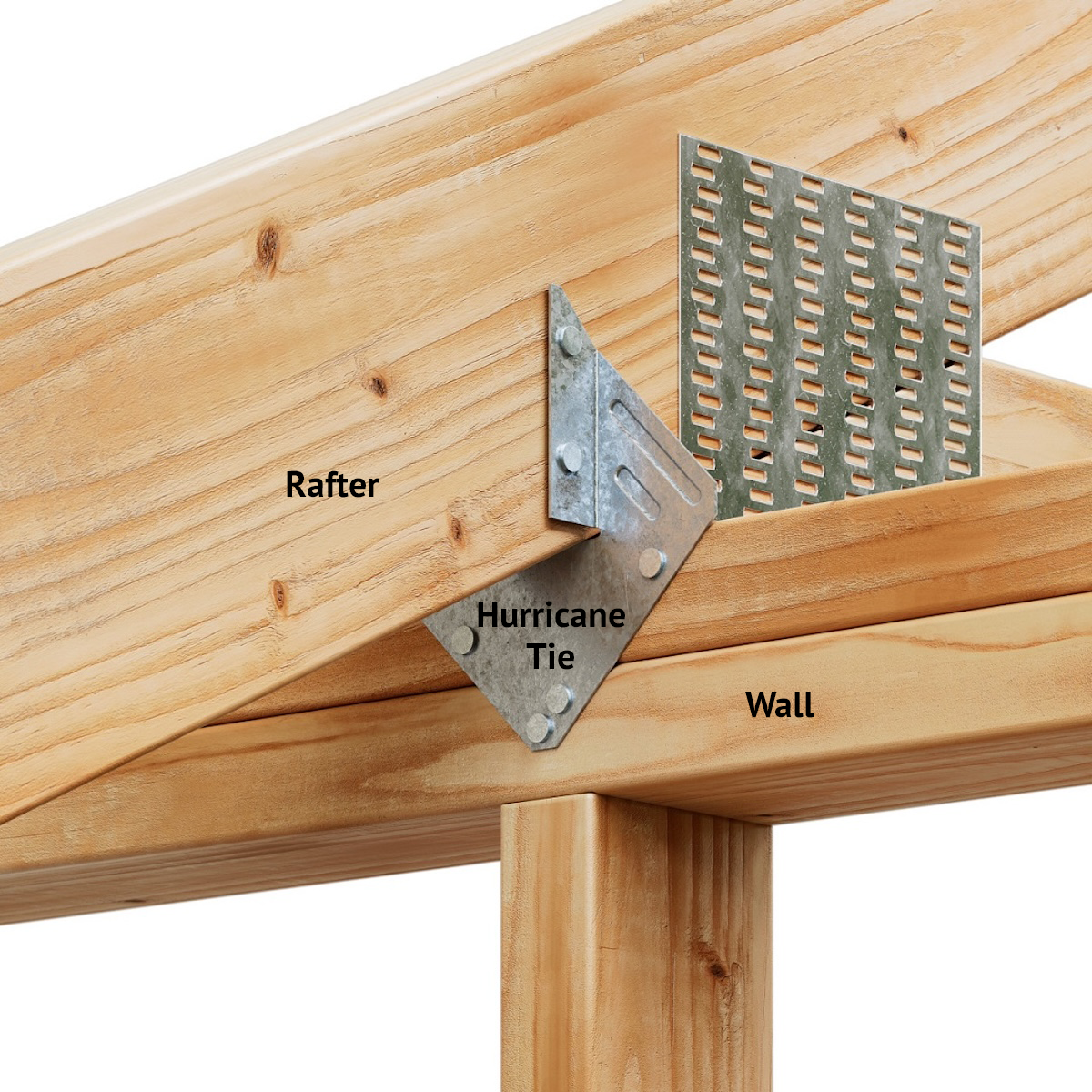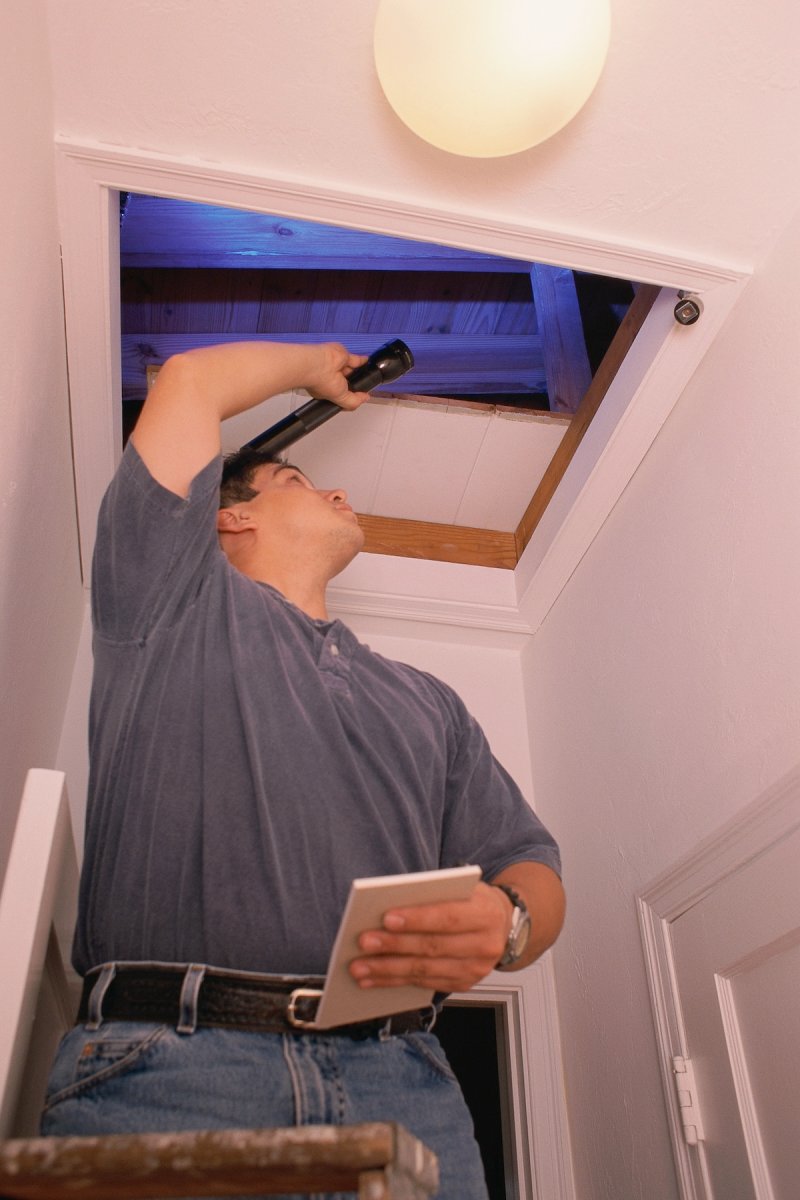

We may earn revenue from the products available on this page and participate in affiliate programs. Learn More ›
Intense storms can wreak havoc on your home, especially when they bring strong winds. Hurricane season, which officially runs from June 1 to November 30, has begun along the Southern and Eastern coastlines. Additionally, the risk of tornadoes is increasing for more people in the country. Whether high winds are in the forecast due to a hurricane, tornado, or severe thunderstorm, it’s critical to protect your roof, and hurricane ties can help.
The National Oceanic and Atmospheric Administration (NOAA) predicts an above-normal 2024 Atlantic hurricane season due to La Niña, warmer-than-average ocean temperatures, and reduced Atlantic trade winds. NOAA is forecasting a range of 17 to 25 named storms (winds of 39 mph or higher). Up to 13 of those will likely become hurricanes (winds of 74 mph or higher), including four to seven major hurricanes (Category 3, 4 or 5; with winds of 111 mph or higher).
Spring 2024 was an active tornado period as well, with 570 tornadoes reported in May, a number twice the 30-year average. While tornadoes used to occur in a limited region in the Plains States, “Tornado Alley” is now shifting east, increasing the potential area where tornadoes can hit. This is a result of the warming climate and extended drought in the West, creating the ideal conditions for tornadic activity in the Southeast and Midwest. Nonetheless, no matter where you live, it is possible to experience a tornado.
Wind from weather events can cause shingles, tiles, and other roof materials to blow off, which can lead to leaks and other damage. If the wind is strong enough, it can even cause the entire roof to lift off. Learn how to avoid a disaster by securing your roof with roof clips.
What are roof clips?
Roof clips—also called hurricane ties, strips, anchors, or brackets—are straps or metal connectors designed to anchor the roof to adjacent walls, significantly enhancing the structural integrity of a home during a severe storm. While the terms are often used interchangeably, a roof clip is a small bent steel plate that connects the roof to the wall trusses supporting it, while a strap tends to be a long, straight strip of metal or nylon that wraps over the top of the trusses. There are different designs available that depend on the type of roof structure and level of support and reinforcement needed.
“While roof clips are primarily marketed for hurricane protection, their ability to reinforce the structural integrity of a home makes them equally effective in tornado-prone areas,” says Ben Johnson, roofing contractor and CEO of Big Ben of Hornchurch in Britain. “The key is their capacity to distribute the wind forces across the building framework, reducing the likelihood of roof uplift and subsequent damage,” says Johnson.

How roof clips can protect your home during a storm.
Roof clips help resist the uplift forces of strong winds, keeping the roof intact and preventing any serious damage from occurring. “Roof clips can significantly bolster a structure’s resilience to high winds, typically up to about 150 to 160 mph, which covers most Category 4 hurricanes and EF3 tornadoes,” explains Johnson. “Beyond these thresholds, the effectiveness can diminish due to the extreme forces at play.” While they might not protect against the most severe storms, roof clips can significantly improve a home’s defenses in most cases.
However, the performance also depends on factors such as the quality of installation, the overall construction of the building, and maintenance of the clips and the roof. Proper installation by a licensed and experienced contractor is essential to maximize roof clips’ effectiveness. Finally, keep in mind that you also need to protect all openings of your home, including windows, doors, and the garage door to ensure they can effectively weather the worst storms.
Who needs roof clips?
Roof clips are beneficial for anyone whose home might be faced with strong winds, which is most of the country. However, the support they provide is especially critical for those living in hot spots for hurricanes and tornadoes; people in those areas should check that their roof is structurally secure.
Some states, such as Florida, Alabama, South Carolina, Louisiana, and Mississippi, require that all new construction includes some type of roof clip or strap. No matter where you live, investing in roof clips can enhance the structural integrity of your home, make it safer, increase property value, reduce insurance premiums in many cases, and give you peace of mind.

You can retrofit an older home with hurricane ties.
Hurricane clips can be added to existing roofs or when a new roof is installed. “Retrofitting an older home with roof clips is a relatively straightforward process,” says Yaeir Moinzadeh, MHIC licensed contractor and the owner of Blue Rise Baltimore Roofing. “It usually involves accessing the attic space, installing metal straps or clips at each roof truss or rafter where it meets the top plate of the wall, and securing them with nails or screws,” says Moinzadeh.
Several types of roof clip options are suitable for retrofitting existing roofs. “The choice depends on the specific needs of the roof and the structural conditions of the home,” says Johnson. He recommends getting a professional assessment to determine the best type of roof clip for an older home.
The cost is generally reasonable, ranging from $1,000 to $1,500 for most homes, says Moinzadeh. The price will vary depending on the location of the home, the number of stories, square footage, age of the home, accessibility of the roof, type and size of clips or straps used, and the cost of labor in the area. Pricing might include the cost of materials, labor, and any necessary permits or inspections, so be sure to ask the pro for an estimate.
While it is recommended to hire a pro to handle roof clip installation to ensure optimal performance and safety, it is possible for homeowners to purchase and install them as a DIY project, says Johnson. They can be purchased from most home improvement and hardware stores, or through online retailers such as Amazon.
